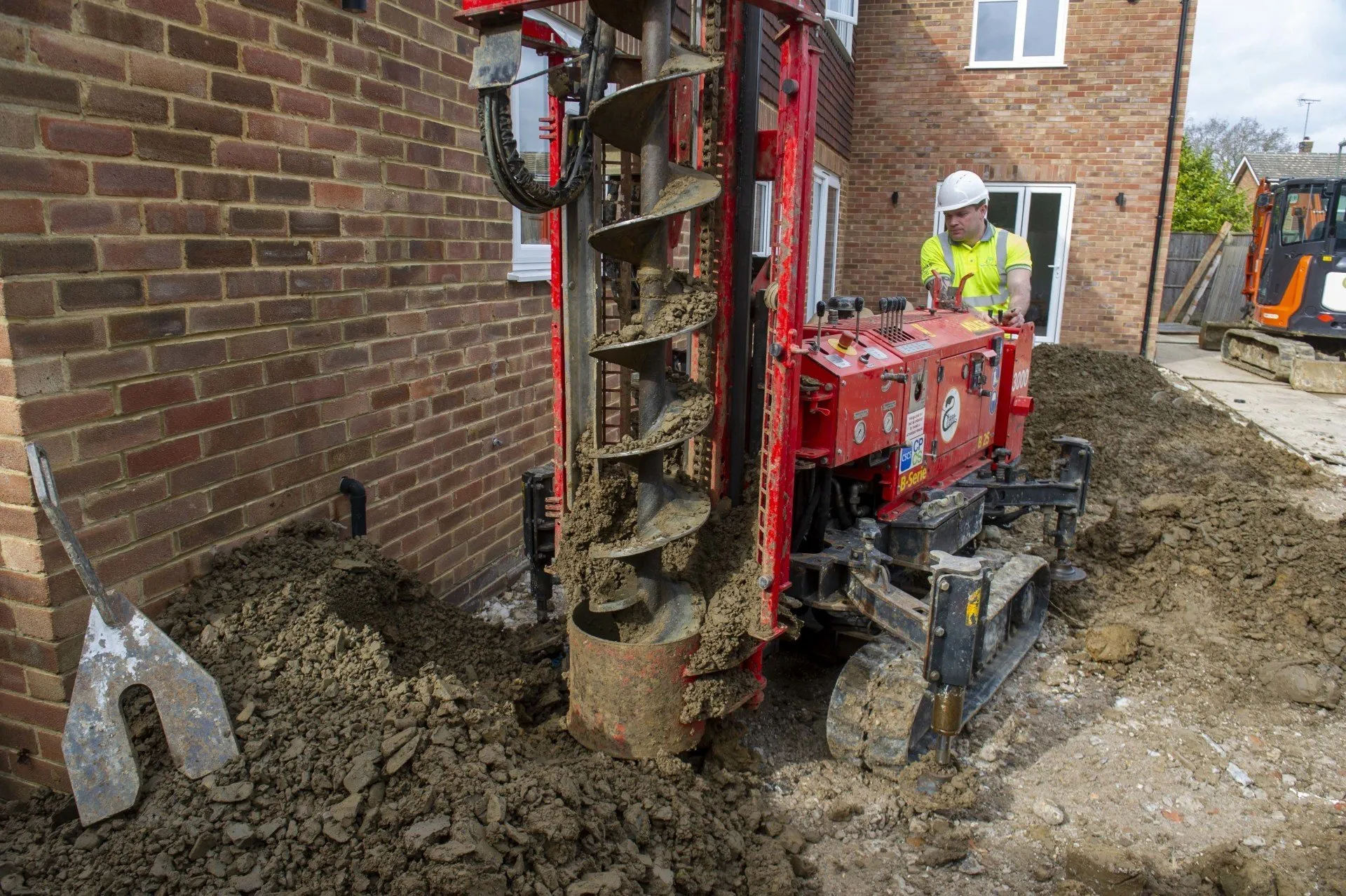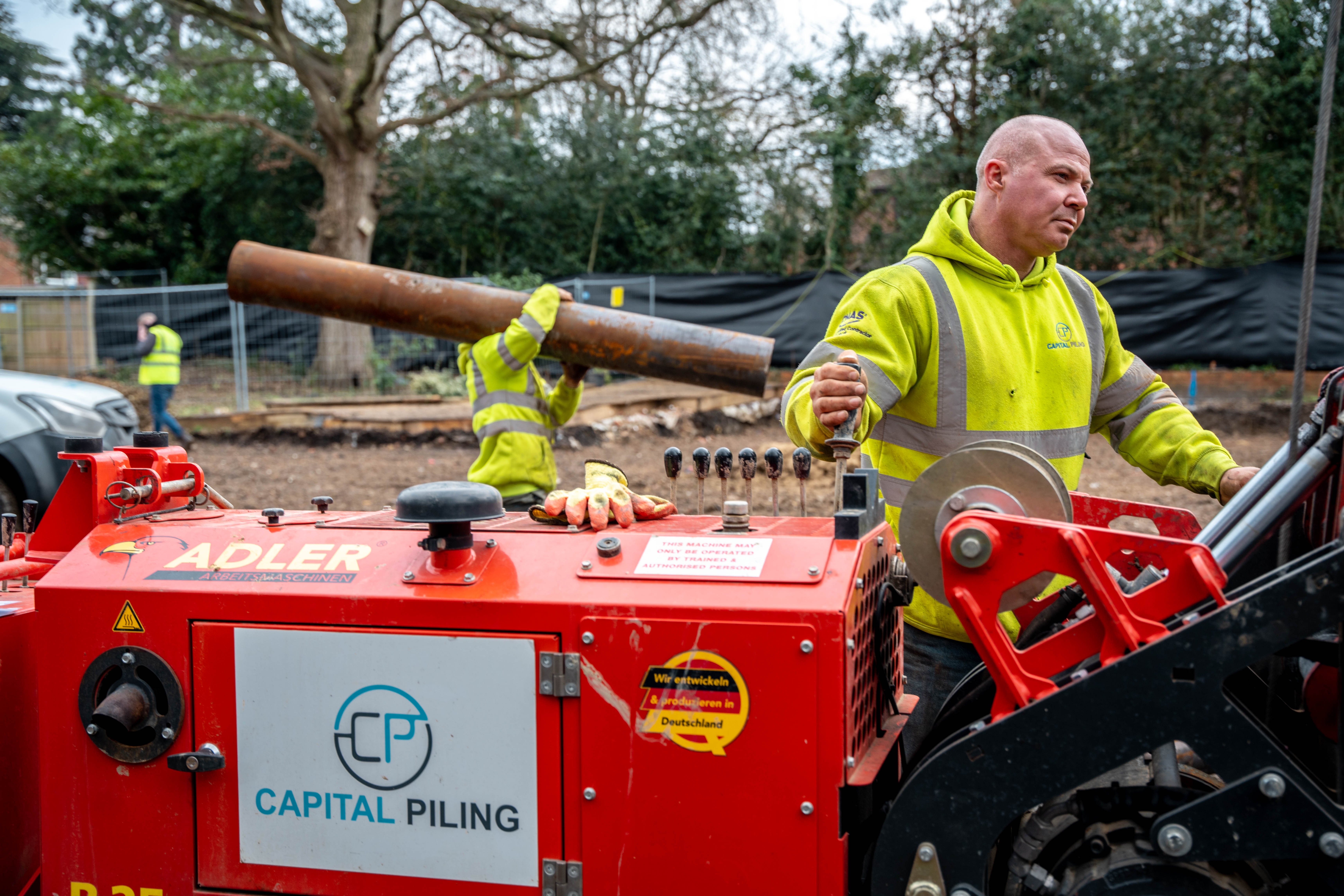How are ground beams installed?
To install a ground beam, a trench is excavated to a specific depth and width. If an engineer or the local council requests an anti-heave, this will be installed accordingly. RC ground cages are then constructed and installed, with concrete filled once passed by the building control inspector or appointed warranty inspector.
We can provide a free quote and a land survey within 24 hours of your call, which will determine whether your site is suitable for ground beams.
Ground beams are ideal when:
- Brickwork support is required
- Land is 'swampy' or prone to water
- There is less than ideal soil quality
How RC slab foundations work
RC slab foundations, also known as ‘raft foundations’, work by distributing the weight of a load across a large, level surface area. These foundations are perfect for situations involving compressible soil or unstable earth. Slab foundations bring the ground to the correct level before reinforced steel is put in place.
Anti-heave is installed if necessary, and the foundation must be passed by the building control inspector before it is filled with concrete. RC slab foundations are an ideal choice, particularly in situations where:
- The land is composed of low-density/pressure soil
- Walls/columns are close together
- The overall load of the project will be low (e.g. 1-2 storey buildings)
- Soil has lots of sediments and contaminants, which make other piling methods unsuitable













